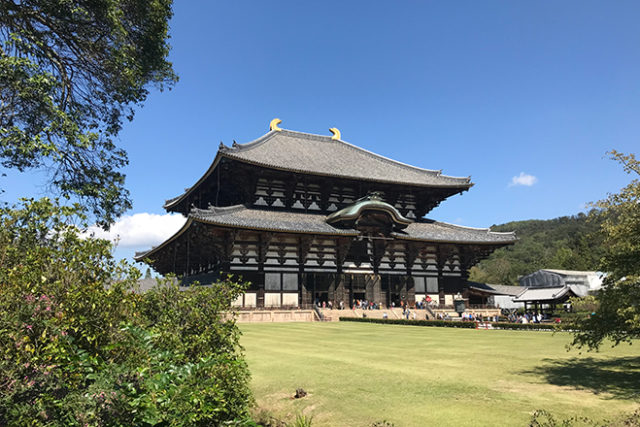By Bruce Inaba, For The North American Post
In 1988, the company I was working for sent us on a two day seminar to learn about a new innovative way of doing business. The course was based on the ideas of Dr. W. Edward Deming who went to Japan after World War II to teach industry leaders how improving quality could lead to lower costs and increased sales. Japan’s auto industry
was the perfect example and our instructor implied by emulating what the Japanese auto manufacturers were doing, we would not fall into the same trap that the US automakers did.
As a Japanese American, I was rather insulted that the managers of our company felt that by incorporating business practices used by Japanese auto manufacturers, we could save our company from losing our commanding lead over our nearest competitors. After all, this was a company where many of my co-workers would expend more effort finding ways to avoid doing their job than simply doing it. No mention was ever made that possibly
the strong Japanese work ethic, their discipline, their respect and willingness to cooperate with others might have contributed to their success in the auto industry.
Thanks to a tour of Japan sponsored by the North American Post, I was able to witness first hand the true character of the Japanese people. Of course, the scenery of a train ride through the mountains to the rural farming town of Takayama was gorgeous, the Buddhist
temples were simply amazing, and the visit to the Hiroshima Peace Memorial was very emotional, but it was the character of the Japanese people that left a lasting impression. It also explained where so many of the values my parents tried to instill in me originated
from. Last of all, it made me proud of my heritage which for many Japanese Americans, especially of my parent’s generation, had been challenged in this country.
My learning experience started before we even left the ground at SeaTac Airport. We flew on ANA Airlines and I noticed two flight attendants checking the emergency exits on opposite sides of our twin aisle plane to verify they were properly secured. Once they completed their inspection, they crossed over to the opposite exit door to ensure the previous flight attendant didn’t miss anything. I had never seen that process done before
and it provided a level of comfort that the plane ride would be safe. Lesson number one: Japanese people are very customer oriented.

When our tour group took its first train ride and arrived at the Tokyo Shinagawa station, it coincided with many of the businessmen exiting the trains and subways on their way to
work. I had never seen such a mass of people, all dressed in black suits and white shirts and moving at such a rapid pace. Our group of 27 tourists had to traverse through a maze of businessmen but there was no pushing, shouting, or tempers flaring. Lesson number two: Japanese people are very courteous.
I was amazed at how clean and quiet the streets in Japan are. There is no litter, no graffiti on the side of the freeways, buildings or railroad cars. The drivers of cars do not honk their horns, nor do trains blow their whistle at street crossings. Most of the trains are electric and relatively quiet and clean in comparison to diesel locomotives which allows trains to run relatively peacefully through residential areas. Pedestrians do not cross streets unless the traffic lights are green. Lesson number three: Japanese people are mindful of other people and their property.
In Japan, most everyone drives a car built by a Japanese manufacturer. You do see a few luxury German, English, and Swedish cars but I did not see one Korean built car which probably would sell for less money than a comparably equipped Japanese car. Also, in every hotel room we stayed in, the television was built by a Japanese manufacturer instead of a Korean brand like you would see in this country. Lesson number four: Japanese people are very loyal and support their own economy.
Every residential home and public facility we saw had the most beautifully maintained garden. Every tree and shrub was neatly manicured into geometric shapes. When we visited one small community, two city employees were trimming a 25 foot pine tree with
a small pruning shear, not an electric or gas powered hedge trimmer. Lesson number five: Japanese people are very artistic and disciplined.
I was inspired by my visit to Japan and I think we could all learn volumes by observing its people. Part of the culture might have been forced upon them by learning to survive in such a small area. After all, Japan has 127 million people living in a country smaller than the state of California. Not being respectful of others and not working in harmony are not an option. Many thanks to Elaine Ikoma Ko, Shigeki Kajita, and the North American Post for allowing me this learning experience.
About Japan Tour presented by N.A.P.
Since 2010, the North American Post and Hokubei Hochi Foundation have offered an
annual cultural tour to Japan for our readers and our local Nikkei community members. Our tour includes travel to Tokyo, Takayama, Shirakawa-go, Okayama, Kyoto, Nara, and Hiroshima and gives members unique local experiences and low tour rates for travelers.
Our 2019 Fall Season tour rate and schedule are coming soon!
Contact: JapanTour@napost.com







